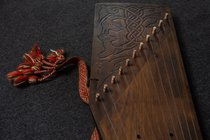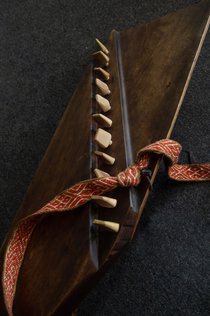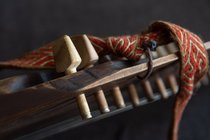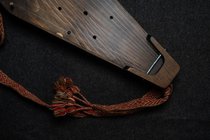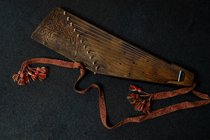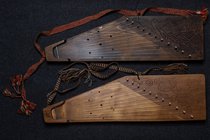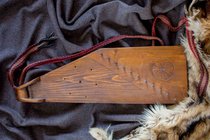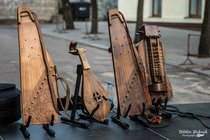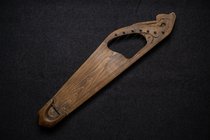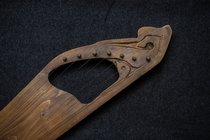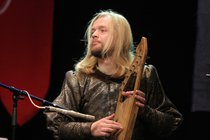Gusli
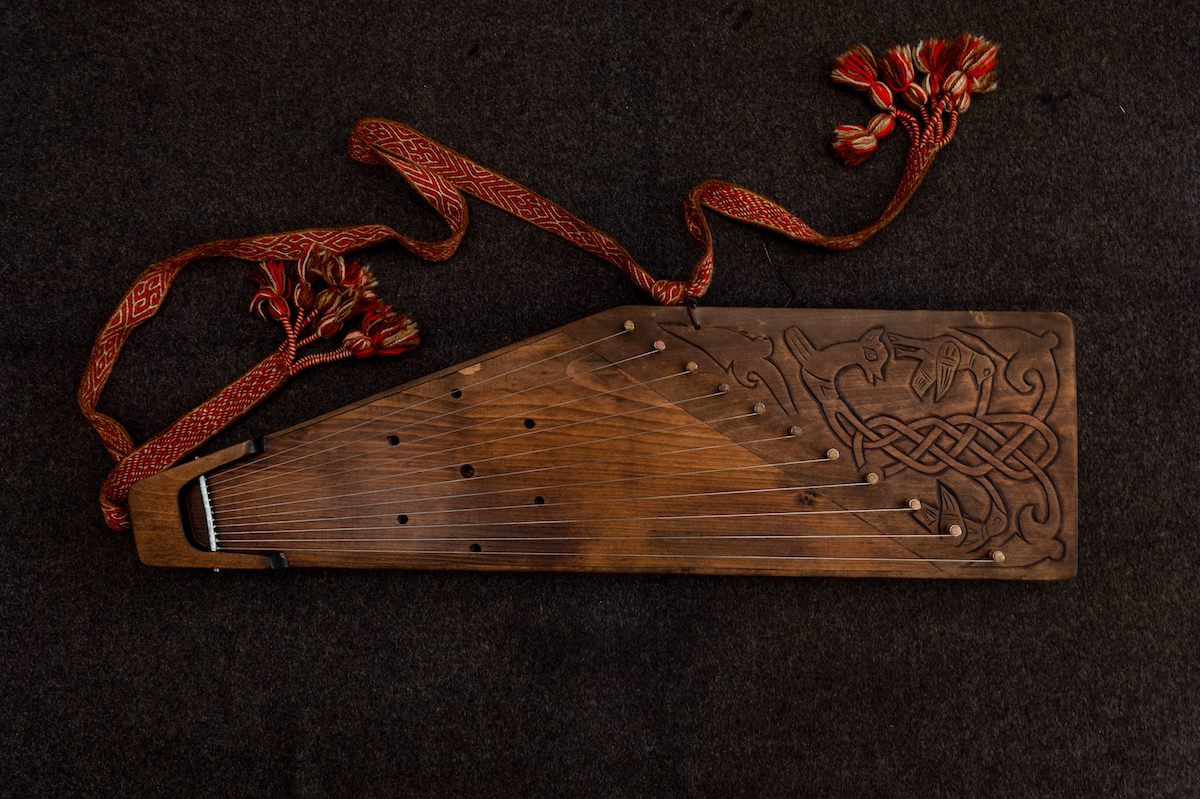
The wing-shaped gusli (Baltic psaltery) is a multi-string plucked instrument, along with the basic body it also has an additional resonator – 'akrylak' or 'krylo' (a wing). For the first time, it is mentioned in Belarus in the 12th century in Kiryla Turaŭski's works.
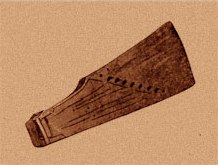 A wing-shaped gusli of the 19th c. from Siebiež district of Viciebsk region, Belarus, Eŭdakim Ramanaŭ's ethnographic collection
A wing-shaped gusli of the 19th c. from Siebiež district of Viciebsk region, Belarus, Eŭdakim Ramanaŭ's ethnographic collection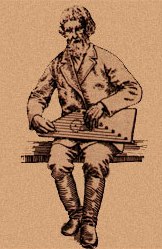 Belarusian gusli player, a drawing by Mikalaj Pryvalaŭ, 1927
Belarusian gusli player, a drawing by Mikalaj Pryvalaŭ, 1927Lyre-shaped gusli is a heir of the Northern lyre-shaped instruments, a transitional form between lyre and gusli. This instrument is quite according to the definition of gusli. It has a fan of strings, a peg line, a metal rod and a resonator. By its construction and sound it is both a lyre and a gusli. But Russian researcher Vladimir Povetkin suggests to call it the gusli by its repertoire and gusli style playing technique. Archaeologists are finding these instruments in ground layers of 11-13th centuries in Gdansk and Opole in Poland, and Novgorod in Russia. All these cities are situated on major water trade routes.
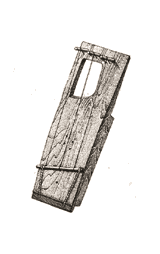
Nothern ancient lyre-shaped instrument
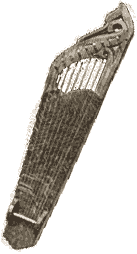
Lyre-shaped gusli from Novgorod's excavations, XIII c.
Early Instruments of Belarus documentary by Zmicier Sasnouski. Gusli 40:03.
Would you like to have the same instrument and learn to play? Contact us: staryolsa.official@gmail.com with a title of your mail 'Gusli'.
